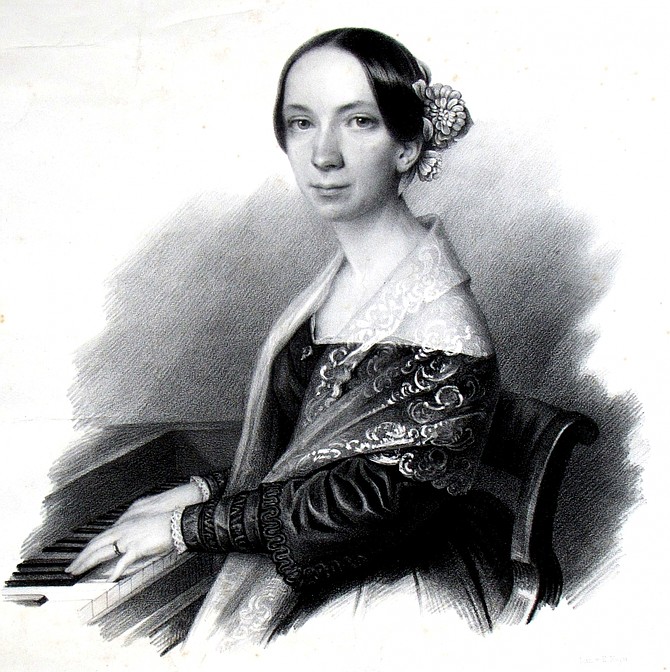 Facebook
Facebook
 X
X
 Instagram
Instagram
 TikTok
TikTok
 Youtube
Youtube

So far we’ve been looking at what we could call the “standard repertoire” for the Playlist No. 5. Let’s add a female composer to the playlist.
Emilie Mayer’s symphonies are fantastic mid-19th-century pieces of music. We are looking here at her Symphony No. 5, but she wrote a total of eight symphonies.
The symphony here could also be her Symphony No. 7, as there is some dispute over the labeling and the fifth symphony could be lost. Her Symphony No. 8 is also presumed lost.
How can two symphonies by a composer of this caliber go missing? She was composing at the same time as Schumann, Wagner, Brahms, Liszt, Chopin, Schubert, and the rest of the romantics.
It’s not as if she was composing in the 17th Century when even composers such as J.S. Bach could go missing for a hundred years.
Let’s consider the music of Mayer’s fifth/seventh. In terms of enjoyment this music surpasses any symphony by Mendelssohn except for his Italian Symphony. It also surpasses any symphony composed by Schubert except for, maybe, his Unfinished.
“Surpasses” is a terrible way to state the case. This isn’t a competition. However, Mayer wrote great music that we can compare to the more established compositions from her era. I’ve listened to other “unknown” composers and decided that they do, indeed, warrant the obscurity in which they now reside.
Emilie Mayer is in a different category. Of her music, which is readily available, the symphonies are superior. Her piano concerto is not great. It feels like Mozart, but it’s not Mozart. That’s the problem with Mozart. If you’re not Mozart, don’t even go there. He’s got it locked down.
In Mayer’s symphonies it sounds, to my ear, that she has a compositional voice equal to or perhaps even superior to other Romantic Era composers.


So far we’ve been looking at what we could call the “standard repertoire” for the Playlist No. 5. Let’s add a female composer to the playlist.
Emilie Mayer’s symphonies are fantastic mid-19th-century pieces of music. We are looking here at her Symphony No. 5, but she wrote a total of eight symphonies.
The symphony here could also be her Symphony No. 7, as there is some dispute over the labeling and the fifth symphony could be lost. Her Symphony No. 8 is also presumed lost.
How can two symphonies by a composer of this caliber go missing? She was composing at the same time as Schumann, Wagner, Brahms, Liszt, Chopin, Schubert, and the rest of the romantics.
It’s not as if she was composing in the 17th Century when even composers such as J.S. Bach could go missing for a hundred years.
Let’s consider the music of Mayer’s fifth/seventh. In terms of enjoyment this music surpasses any symphony by Mendelssohn except for his Italian Symphony. It also surpasses any symphony composed by Schubert except for, maybe, his Unfinished.
“Surpasses” is a terrible way to state the case. This isn’t a competition. However, Mayer wrote great music that we can compare to the more established compositions from her era. I’ve listened to other “unknown” composers and decided that they do, indeed, warrant the obscurity in which they now reside.
Emilie Mayer is in a different category. Of her music, which is readily available, the symphonies are superior. Her piano concerto is not great. It feels like Mozart, but it’s not Mozart. That’s the problem with Mozart. If you’re not Mozart, don’t even go there. He’s got it locked down.
In Mayer’s symphonies it sounds, to my ear, that she has a compositional voice equal to or perhaps even superior to other Romantic Era composers.
Comments